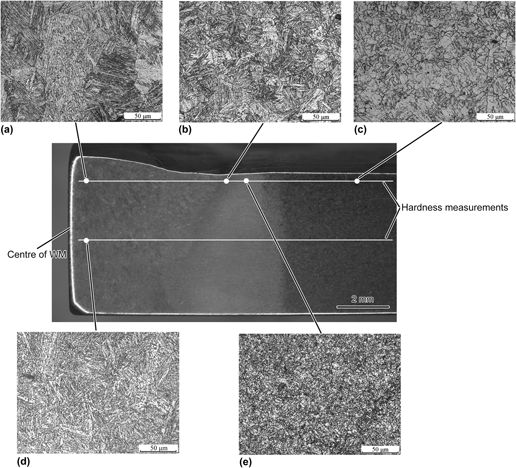Article contents
Mechanical properties of T23 steel welded joints without post-weld heat treatment for fossil fired boilers
Published online by Cambridge University Press: 21 November 2016
Abstract

Microstructures of new heat-resistant steel grade T23 welded joint without PWHT and its corresponding mechanical properties including creep were investigated to clarify its premature failure mechanisms in the large water wall panel of the advanced power plant boiler. The results show that the T23 steel GTAW welded joint in a wall thickness of 6.5 mm without PWHT exhibits high tensile strength, good ductility, and sufficient impact toughness, while the hardness of the WM is higher than the maximum permitted value of 350 HV due to the large amount of un-tempered martensite formed during the cooling process of welding. This WM in as-welded condition has higher creep rupture strength but poorer rupture ductility than the tempered BM. Poor rupture ductility taken place in the WM results from inter-granular cracking during creep exposure and is not related to the second hardening because no hardness rise occurs in the fractured WM compared with as-welded condition. The paper does not specifically investigate the effect of service exposure but simulates the failure of WM by a creep test. The main point is that the WM has low creep ductility, especially at a stress concentration.
Keywords
- Type
- Articles
- Information
- Copyright
- Copyright © Materials Research Society 2016
References
REFERENCES
- 7
- Cited by



